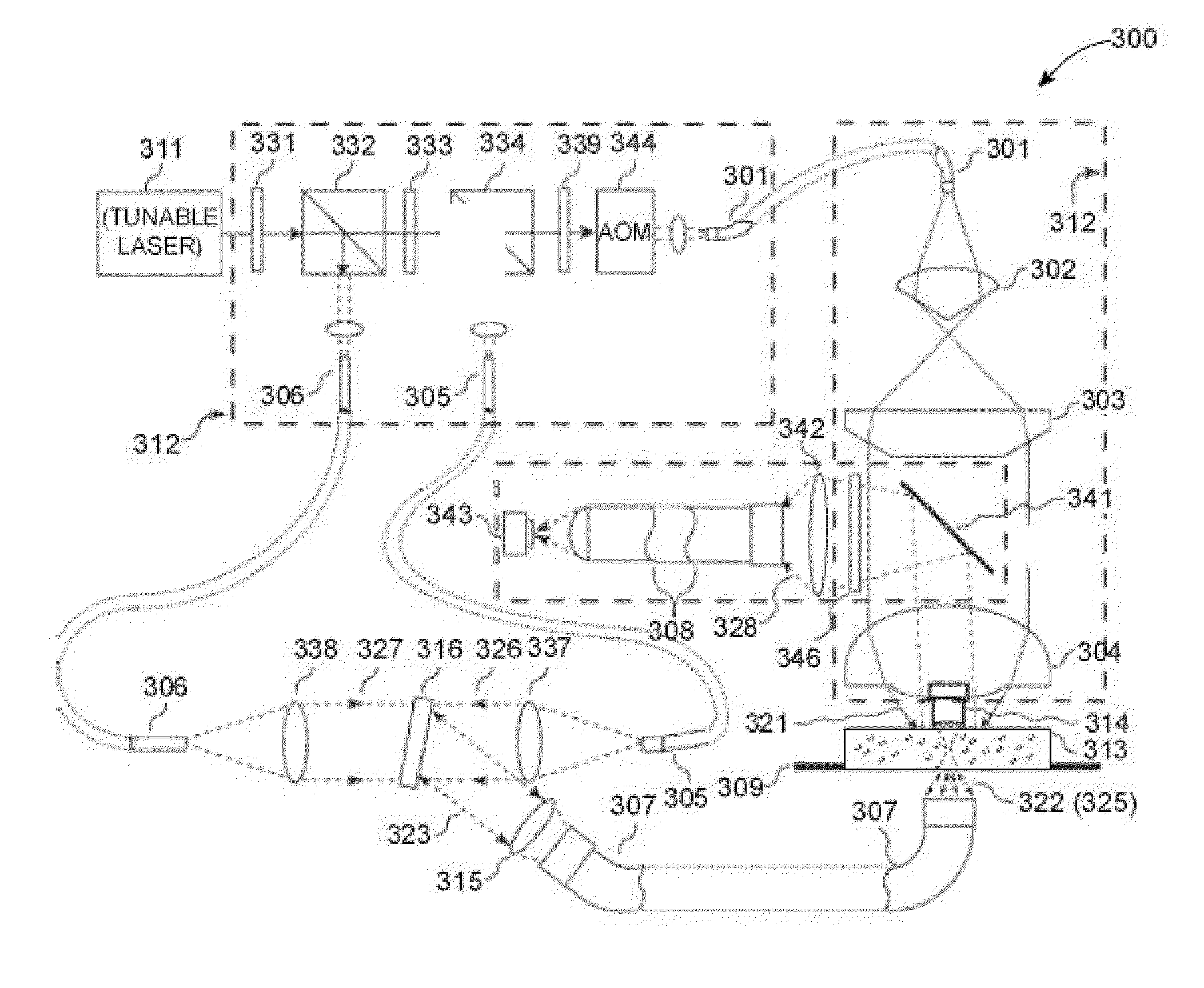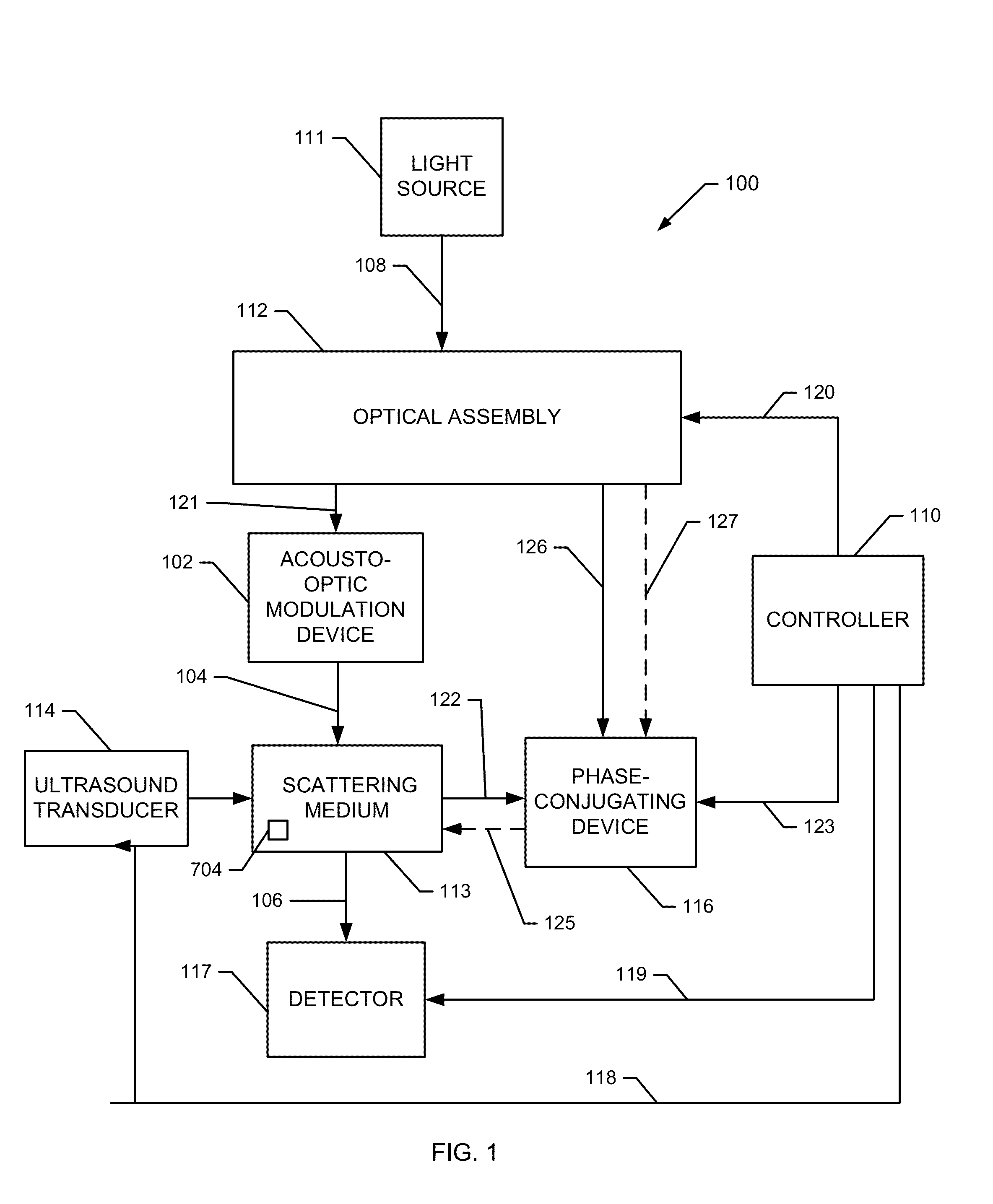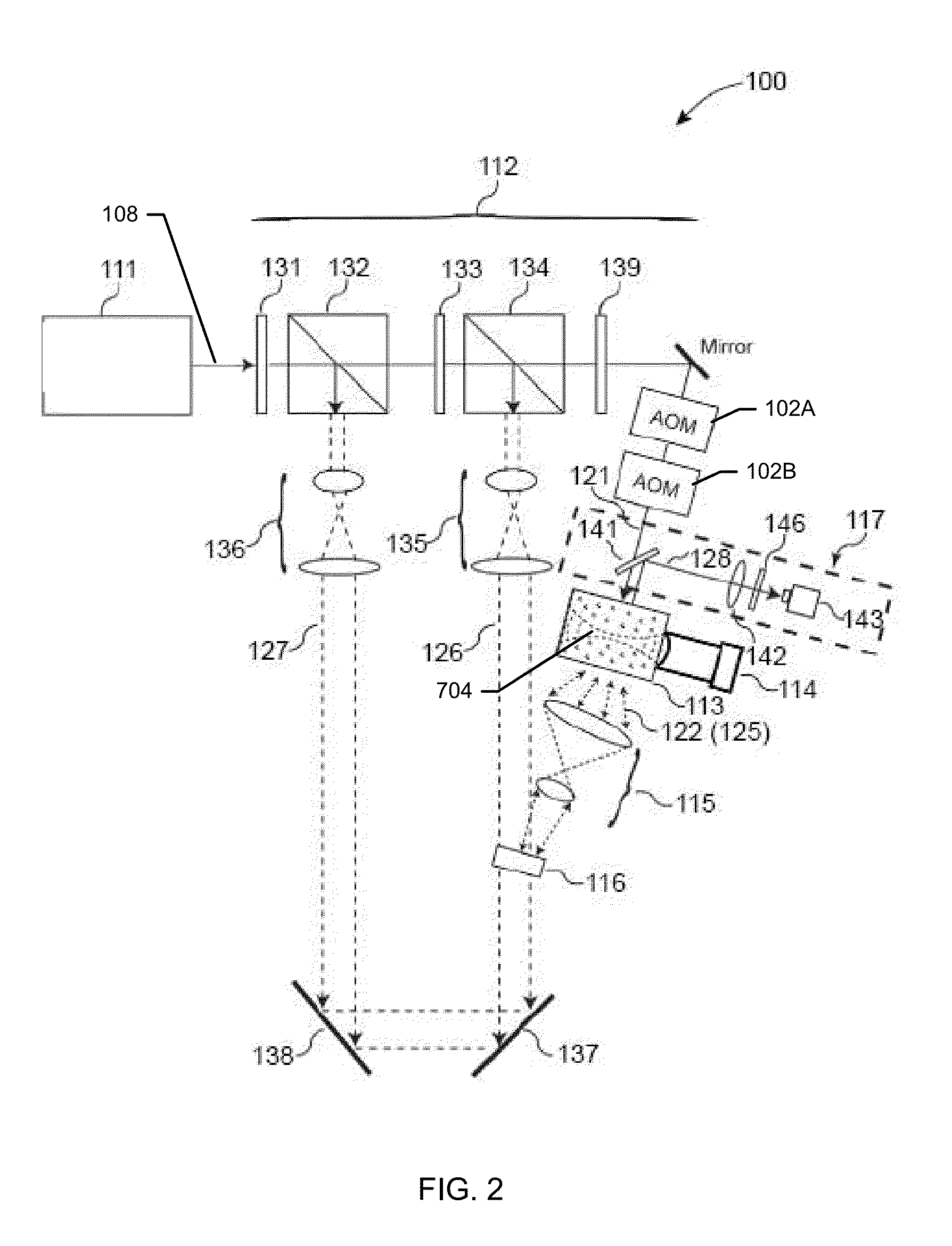Iteration of optical time reversal by ultrasonic encoding in biological tissue
a biological tissue and ultrasonic encoding technology, applied in the field of time-reversed ultrasonic encoding optical focusing, can solve the problems of limited application of light imaging techniques such as optical imaging within biological tissues and other heterogeneous media, and current optical imaging techniques, such as optical coherence tomography, are limited, and other well-known techniques, such as confocal microscopy and multi-photon microscopy, have even more restricted penetration paths
- Summary
- Abstract
- Description
- Claims
- Application Information
AI Technical Summary
Benefits of technology
Problems solved by technology
Method used
Image
Examples
example 1
Digital Ultrasonically Encoded (Due) Optical Focusing Using Prototype Iterative Feedback System
[0188]To demonstrate the feasibility of using an iterative feedback method to shape the phase distribution across a wavefront of light to enhance transmission through a scattering medium, the following experiment was conducted.
[0189]A prototype system, shown schematically in FIG. 8, was used to demonstrate DUE optical focusing an iterative feedback focusing method as described herein above. The prototype system 800 includes a spatial light modulator (SLM) 802, divided into 20×20 independently controlled segments, to shape the incident wavefront 804 delivered by a coherent light source 806. The SLM response was modulated by control signals 808 received from a computer 810; the SLM response was calibrated to provide a linear phase shift of 2π over 191 grayscale values for each segment. To simulate light transmission through a scattering medium, the phase-shifted wavefronts 812 were delivered...
example 2
Assessment of Effectiveness of Digital Ultrasonically Encoded (Due) Optical Focusing Using Prototype Iterative Feedback System
[0195]To demonstrate the effectiveness of using an iterative feedback method to shape the phase distribution across a wavefront of light to enhance transmission through a scattering medium, the following experiment was conducted.
[0196]The prototype system of Example 1, shown schematically in FIG. 8, was used to implement DUE optical focusing the genetic optimization algorithm as described in Example 1. To assess the effectiveness of DUE optical focusing, a bar 836 containing fluorescent quantum dots was embedded within the clear gelatin medium 818 within the focal region of the system. The bar was situated in a horizontal orientation (perpendicular to the plane of the page as illustrated in FIG. 8) and had a 1 mm×1 mm square cross-sectional profile. Referring again to FIG. 8, a CCD 836 outfitted with a longpass filter 838 was used to measure the intensity of ...
example 3
Sensitivity of Phase Distribution Optimization Procedure Using Simulated WFS System
[0199]To assess the sensitivity of the optimization of phase distribution to the characteristics of the prototype DUE optical focusing system 800, the following experiment was conducted.
[0200]The genetic optimization algorithm and DUE optical focusing system 800 described previously in Example 1 were simulated to assess the sensitivity of the light intensity generated within the media 818 in the focus region to the number of elements in the array of the A simulation of the optimization of the phase distribution of the light modulator (SLM) 802.
[0201]Without being limited to any particular theory, it is known in the art that the expected increase in intensity η is equal to the ratio of the number of independent SLM segments N to the number of speckle grains in the ultrasound focus M, according to Eqn. (XII):
η=N+1MEqn.(XII)
[0202]A simulation was developed to model the expected increase in intensity. To ...
PUM
 Login to View More
Login to View More Abstract
Description
Claims
Application Information
 Login to View More
Login to View More - R&D
- Intellectual Property
- Life Sciences
- Materials
- Tech Scout
- Unparalleled Data Quality
- Higher Quality Content
- 60% Fewer Hallucinations
Browse by: Latest US Patents, China's latest patents, Technical Efficacy Thesaurus, Application Domain, Technology Topic, Popular Technical Reports.
© 2025 PatSnap. All rights reserved.Legal|Privacy policy|Modern Slavery Act Transparency Statement|Sitemap|About US| Contact US: help@patsnap.com



